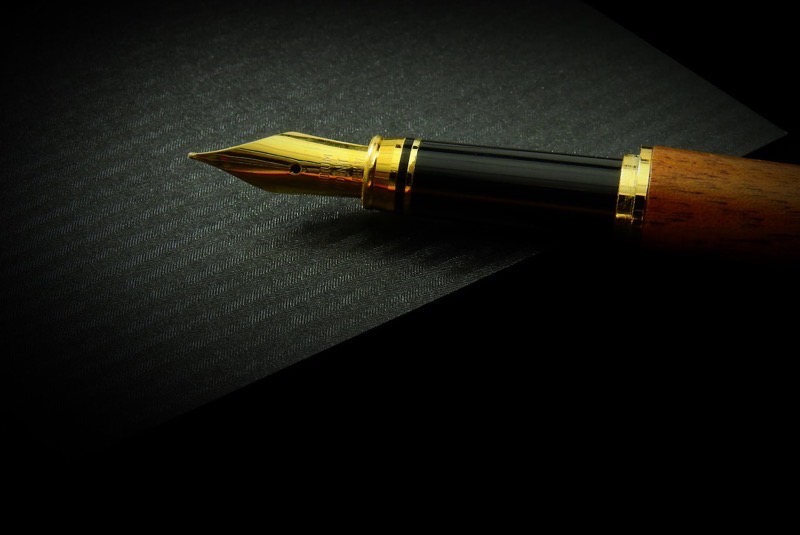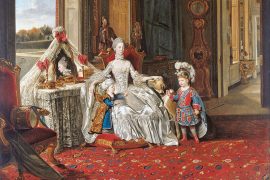When I was young, I wrote prolifically in my ‘Dear Diary,’ a journal with real pages. Unfortunately, it was discovered, and I had to burn it. That fear remains in me thirty years later, too – the fear of my personal, physical notes getting “hacked” the old-fashioned way.
A friend told me it’s best to write in pen and paper rather than on a computer to beat the risk of online hacking. However, he disregarded the above-mentioned fact – of the snooping battering half (this is how I lovingly refer to my better half, all puns intended).
My pen journey started when I was in class five. In hindsight, I think the discipline of writing with a fountain pen was necessary; it was my right of passage to become a man. And I wrote with many pens – Hero pens, Pilot pens, and also with a fancy Sheaffer, a gift from my father, who had many expectations of me.
We (my friends and I) called them ‘ink pens.’ I did not know that they were also referred to as ‘fountain pens’ until after I rekindled with them as an adult a few years ago. Between then and now, when I was treading a path of teenage rebellion (without a cause, of course), I lost touch with fountain pens and adopted newer technology along with newfound freedom post-school. I had a long stint with ballpoint pens, too.
Well, evolution is inevitable, indeed. Fast forward: now, in the golden years of middle age, a father of two wonderful children, I rediscovered the fountain pen while watching a YouTube video. No, it was not a Mont Blanc, Sailor, or a Visconti, but a rugged old brass pen with a steel nib, a Kaweco Sport. Then, I did everything in my Google search powers to identify what I had seen in the video. It was a beauty, but it seemed too pricey for a pen. I tried to find a rationale, a justification.
After experimenting with pens off the supermarket rack, I began to understand that quality comes at a price. After breaking my mental piggy bank, I loosened my pursestrings and finally bought this shiny grail. I like edgy things, I thought to myself and began the ritual of finding the ‘right’ ink for it.
To my mind, owning and collecting fountain pens probably has something to do with human history. The invention of the pen, I believe, was revolutionary. At some point, the pen was a technological breakthrough that relieved humans from the agonising task of chiselling away their stories on stone tablets.
Collecting and using writing instruments are two different things. A collector, in my experience, isn’t necessarily a prolific writer. But those who obsess over their only pen could use it more. Collectors love to acquire and possess items they deem valuable.
It’s a hobby, an expensive one in some cases, but a very private one nonetheless. However, with the advent of internet forums and closed social media groups, collecting pens has become a bit of a show and tell. Now, people share information and photos of their acquisitions, including paraphernalia surrounding the hobby of collecting fountain pens. From the type of nibs – fine, medium, broad, double broad, italic, stub, oblique, music, flex, titanium, gold and steel – to the body material and grips of said fountain pens. It’s absolutely fascinating!
When I travel abroad or interact with business clients and diplomats in India, my favourite gifting item is the Ratnam Sons fountain pen from Rajahmundry; its claim to fame was that Gandhi Ji had written to the maker and encouraged him to make pens indigenously to stop India’s dependence on imported pens. Ratnam’s pens make wonderful gifts mainly because of their historical significance. They are also a great way to introduce someone to India.
There are many artisan fountain pen makers in India. Recently, I bought a full silver-bodied pen from an Indian brand called Lotus upon the suggestion of a doctor who used the pen. It writes very well (smooth and wet) and comes with the choice of a JoWo (German) nib.
Collectors have their preferences; some prefer the weight of a heavy metal pen, and others like the feather-lightness of resin. Some prefer plastic grips to metal ones for long writing. Gold nibs are another luxury in the fountain pen world; they write softer and wetter than the more rigid steel nibs.
People collect pens for various reasons, to quench their curiosity, to show their status, to fit into a group and sometimes, purposefully, to use them. I believe I am an accidental collector who unwittingly ends up with a variety of nearly the same writing instruments. There was a time when I had less but used more. Ironically, now, I have more but use less.
One cannot deny that fountain pens have a particular character; there’s one for everybody, yet not for everyone. They need us to slow down in this otherwise fast-paced world. Writing with a fountain pen forces us to focus and become discerning. It also helps understand many factors that go into using the fountain pen: what ink (whether pigment or dye based) is complementary to which kind of nib, which brand of paper doesn’t blot or ghost, etc.
At times, I wonder why I am inclined to buy fountain pens. Am I doing this to fill a certain void? Or am I just appreciating the artistry? I guess it’s a bit of both. But in my beloved battering-half’s opinion, I’m just a hoarder of things. But I think there’s certainly a thin line that is invisible to her.
Perhaps it’s an attempt to fill it with things that we think may inspire and even complete us. But lo and behold, it’s never enough. It is like Alice in Wonderland’s rabbit hole, insatiable.
I have also attempted to seek answers from others, too. While some said a fountain pen is an interface between their thoughts and paper, others have said they’re like their jewellery.
Ironically, despite my love of fountain pens, and a modest collection, I am still typing this article on my computer. I embrace technology, like a Kindle to a book, a book to a scroll, and so on.
Many greats allow their thoughts to flow by putting pen to paper, quite literally; Neil Gaiman writes with a Pilot Custom 823 – he calls it his workhorse. Sir Arthur Conan Doyle wrote with a Parker Duofold; Stephen King, the ‘king of horror,’ wrote one of his best-selling works, Dreamcatcher, with his Waterman Hemisphere. Haruki Murakami, the Japanese master storyteller, wrote his first manuscript with a five-dollar Sailor. Murakami’s love affair with fountain pens is such that he even gets his characters to write with fountain pens. There are, of course, many such stories.
So, here’s my prayer: May the mighty pen, the pen makers and pen lovers thrive. And may physical writing live long – outside schools and universities. And may the many fabulous pen brands live on – not as mere artefacts but tools that champion freedom of thought and expression.
-30-
Copyright©Madras Courier, All Rights Reserved. You may share using our article tools. Please don't cut articles from madrascourier.com and redistribute by email, post to the web, mobile phone or social media.Please send in your feed back and comments to [email protected]











